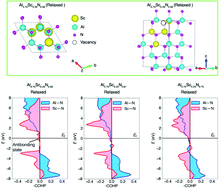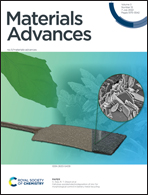Computational understanding role of vacancies and distortions in wurtzite ferroelectric memory materials: implications for device miniaturization†
Abstract
The ever-increasing importance of applications based on machine-learning has driven the need to develop delicate energy-efficient electronic hardware. Compared to traditional von-Neumann architectures, which contain separate main-memory and storage units, nonvolatile edge computing utilizes the same device structure for data storage and rapid operations, therefore promising to decrease the energy costs of data-centered computing significantly. Although various research has focused on exploration of new device architectures, engineering material systems suitable for these device designs remains challenging. Ferroelectric materials (FEM) are leading contenders for these systems because of their excellent materials and electronic properties. Here, we demonstrate how the role of composition and distortion in structural signatures of FEM can be studied using density functional theory (DFT). The previously unreported origins of vacancies and distortions are revealed, and we show that the stable AlScN model with wurtzite structure is described by small/negligible vacancy concentrations and minimal localized distortions. Additionally, the low vacancy populations formed can be explained by the need to remove energetically-unfavorable anti-bonding Al–N and Sc–N interactions near the Fermi level. Theoretical studies elucidate a vacancy-facilitated decrease in leakage currents. These results provide deeper insights that can help to rationalize the design of next-generation low-power electronic systems.



 Please wait while we load your content...
Please wait while we load your content...